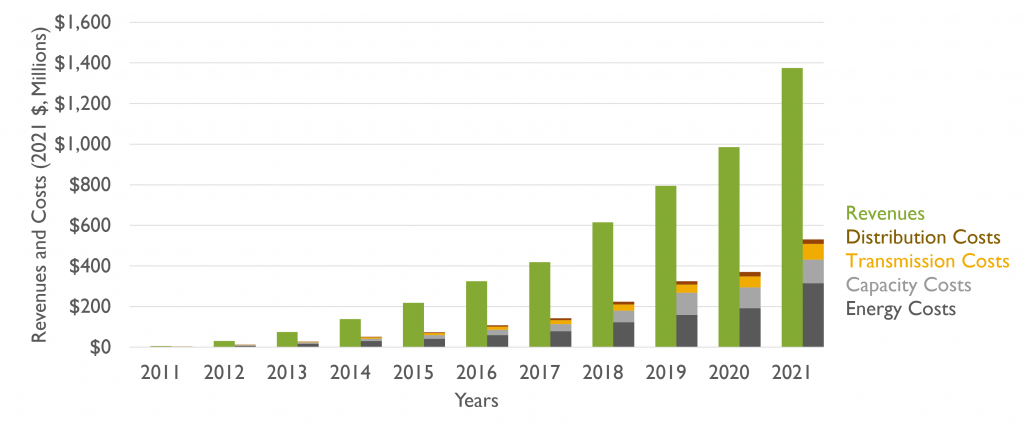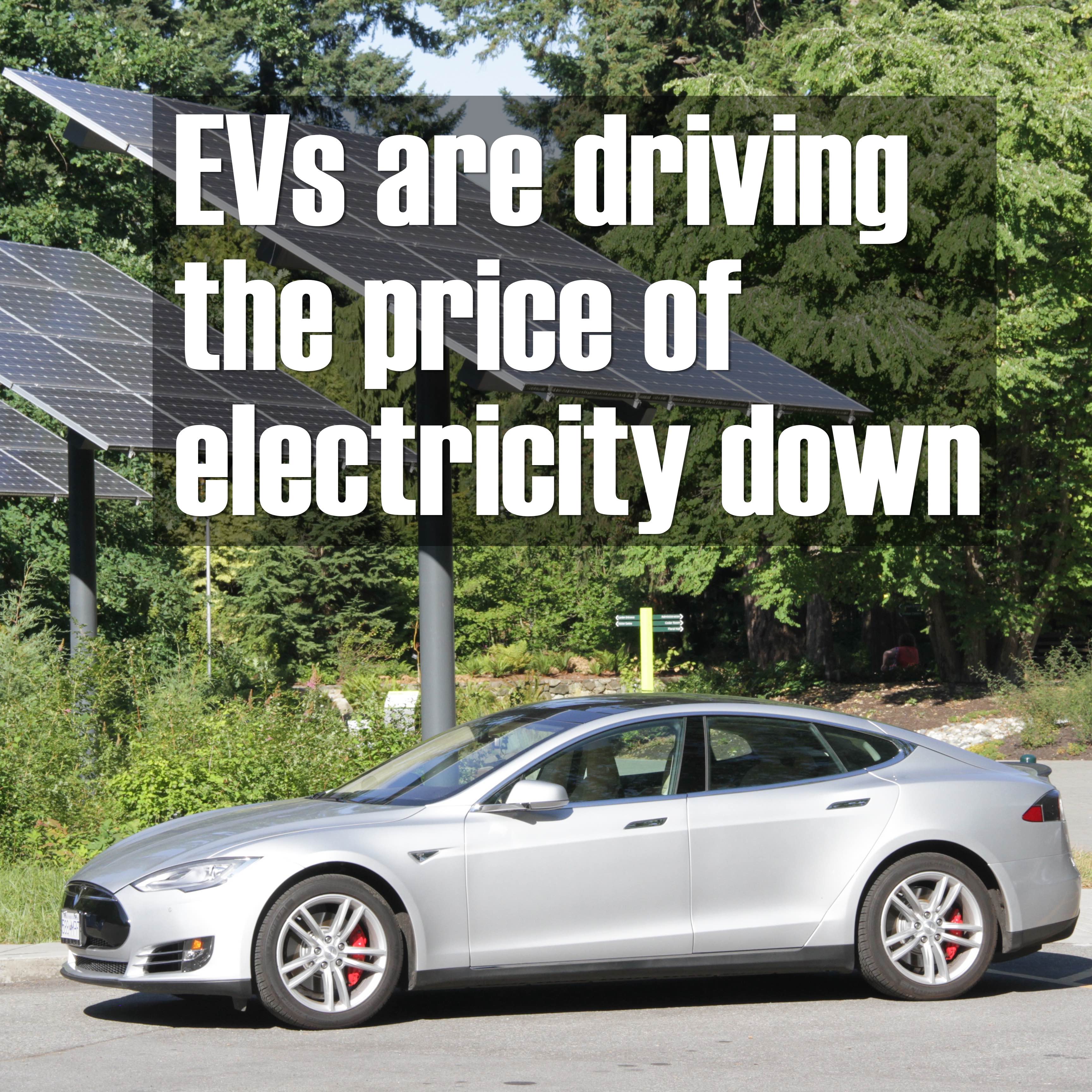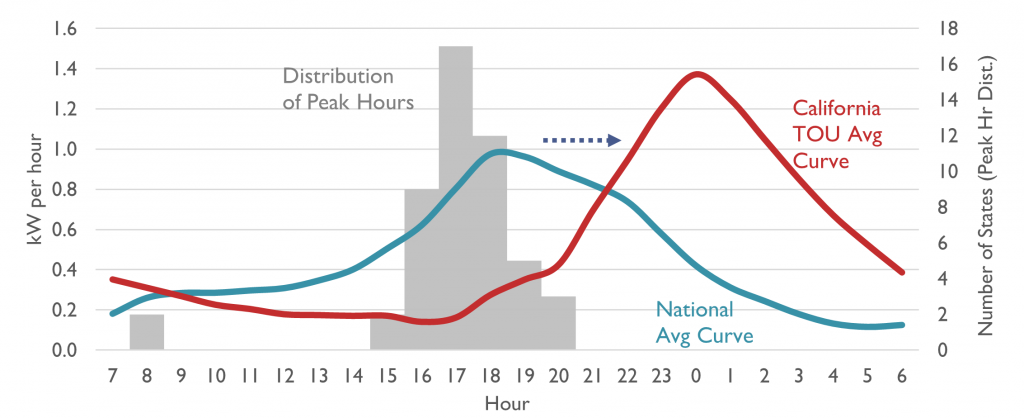By David Dodge, GreenEnergyFutures.ca
It may sound counterintuitive, but a new study has found EVs are driving the price of electricity down.
You’ve probably heard the refrain – ‘EVs are going to crash the grid.’ But a new study from the Natural Resource Defence Council has found EVs have increased net profits for utilities and brought down the price of electricity for consumers.
“We know that transitioning our transportation system to a cleaner and electrified system is really important because transportation is the number one source of greenhouse gases in the United States,” says Jordan Brinn who works on electric transportation for the NRDC.
Brinn says EVs not only reduce greenhouse gas emissions they also reduce pollutants and smog which are “really harmful … and cause a lot of health impacts.”
The NRDC wanted to know what impacts EVs are having on utilities and electricity markets so they commissioned a study.

EVs are saving everybody money on electricity
It turns out “EVs are saving everyone money on their bills. In short, EV drivers are charging their cars, they are paying money to their electric utilities, which is giving electric utilities an additional source of revenue because they’re paying that money to their utility rather than to a gas station,” says Brinn.
Indeed the utilities have raked in $3 billion in net revenues in one decade and this has caused downward pressure on electricity prices.
The reason for this on one level is pretty simple. EV owners charge their vehicles during non-peak times thanks to time-of-use pricing.
For grid operators, this is great because the EV owners are using excess capacity in the grid that is already built and paid for.
“It is making better use of existing infrastructure,” says Brinn. If you have a restaurant that is operating at low capacity at lunchtime you can increase your profits by filling up the restaurant at that time without costly expansions.
Demand management is a catchphrase for utilities and it has long been used to change people’s behaviour to reduce electricity demand.

Time-of-use pricing is motivating EV owners to charge their cars (which is programmable in most EVs) when electricity is the cheapest, which is often the middle of the night.
As solar becomes more and more common on grids it may create another favourable time for charging around midday.
The effect is most dramatically illustrated by the charging habits of Californians who have moved their EV charging to the middle of the night thus making much more efficient use of the grid and saving money at the same time.

EVs are not crashing the grid and costing everyone a ton of money
This contradicts the narrative you hear about EVs which says they’ll “crash the grid, and cost everyone a ton of money.”
These are stunning results for a voluntary measure and a testament to how price-sensitive electricity customers are.
In the U.S. 2023 was a record year in which one million EVs were sold. EV sales were up 50% in 2023. You see many stories about EV sales slowing down in early 2024, but remember only the rate of growth in sales is slowing down and sales will continue to soar.
Numerous analysts are predicting EV sales to reach between 9 and 11% of auto sales in the U.S. which are projected to reach just under 16 million vehicles.
This is great news that EVs are actually exerting downward pressure on electricity pricing, but voluntary measures won’t be enough to manage the millions of EVs coming on the roads.
Time-of-use pricing and managed charging are essential for the future
“We need to start planning for additional EVs on the grid today,” says Brinn. We need tools such as time-of-use pricing, managed charging and smart technologies to smooth out electricity demand. EVs may even be used as peaking power plants by using vehicle-to-grid technologies.
Smart technologies are already available to manage these new demands on the grid, but utilities are slow to adopt them. DCBel has created an integrated DC EV charger, solar inverter and AI-powered energy management system for the home which is already capable of feeding electricity vehicle-to-grid. States like California, Texas and New York are starting to adopt technologies like this, but few others are.
Making more efficient use of the grid
The big takeaway here is to make much more efficient use of existing grid capacity. There is a lot of excess capacity built to handle peak demand. Spreading out demand can provide more electricity from new generation using existing infrastructure.
“In a single-family residential home, you use about eight per cent of the energy throughput capacity annually,” James Bererton, energy storage expert told Green Energy Futures in our story on energy storage.
More infrastructure is needed as well, but making the grid as efficient as it can will help keep prices down.
Meanwhile thanks to a recent Bloomberg NEF study we know EVs are already reducing emissions in every market in the world, even China with its dirty grid.
EVs are cleaner to drive. And “EVs are the only car that gets cleaner over their lifetime. So as our grid continues to incorporate more renewable sources of energy, like wind and solar…they’re going to emit less and less greenhouse gas emissions than gas-powered cars,” says Brinn.
The lifecycle cost of owning an EV is already $3,000 to $10,000 cheaper thanks to operating costs that are 40-60% lower than for an internal combustion vehicle.
As for sticker price parity, Brinn says we could be just a few years away from that happening for some models of EVs. For now they still cost more upfront.

